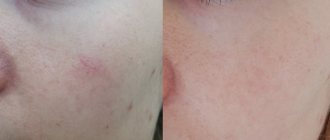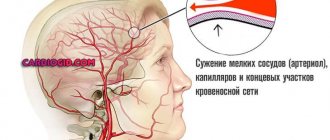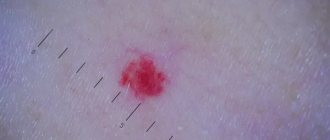“Red eye” syndrome is a general concept that includes various nosological forms, a typical symptom of which is active hyperemia of the conjunctiva of the eyeball, that is, dilation of the arterioles of the conjunctiva, and sometimes of deeper vessels. Hyperemia (redness) of the eye in SCL users can be caused by a number of reasons not related to the use of lenses, as well as factors resulting from improper selection or care of lenses. In this regard, it is especially important that the initial selection or replacement of SCLs of one type with another is carried out by a qualified contact physician.
Lens wearers also need regular follow-up with an ophthalmologist to prevent possible complications.
The main causes of red eye syndrome in SCL users
- dry eye syndrome (DES)
- mechanical causes (erosions, corneal staining, giant papillary conjunctivitis)
- toxic-allergic reactions (giant papillary conjunctivitis, sterile corneal infiltrates, superficial punctate keratitis)
- hypoxic complications (hypoxic “stress” during over-wearing of lenses, prolonged wear or insufficient cleaning, sterile infiltrates of the cornea, ingrowth of blood vessels into the cornea)
- infections (conjunctivitis, keratitis)
Causes of red blood vessels in the eyes
There are many reasons that cause red eyes. These include various inflammations, infections, and excessive visual stress. The eyes turn red when wearing contact lenses if you do not follow the rules of disinfection, the regimen and timing of their wearing. The vessels may become visible if dry eye syndrome develops - with such an ophthalmological problem, a lack of tear fluid is detected, which negatively affects the condition of the capillaries.
Why eyes turn red - reasons:
- colds that occur with fever;
- dry eye syndrome when wearing contact lenses;
- increased visual stress;
- ophthalmological infectious diseases;
- allergic rhinitis, conjunctivitis;
- hypertension - due to increased pressure, blood vessels increase in volume;
- intraocular pressure, glaucoma;
- reaction to the use of medications;
- foreign body, dust, sand getting into the eye;
- hemorrhage as a result of blockage of the retinal veins, its detachment.
Reducing the amount of moisture in the eyes can cause the spread of viruses and infections, and inflammation of the conjunctiva. A healthy person has all the mechanisms to protect against such exposure. Tears contain lysozyme, a protein that has antimicrobial and antiviral effects. If there is little tear fluid, for example, due to working in rooms with functioning climate control equipment, or with increased visual stress at the computer, this can lead to redness of the eyes.
You can eliminate visible eye vessels with the help of whitening drops, which relieve redness and swelling of the conjunctiva, having a vasoconstrictor effect. But the problem will arise again if you ignore the very cause of red eyes.
And this reason may not be harmless at all, because some diseases of the visual organs require serious treatment due to the rapid development of dangerous symptoms. Thus, constantly increased intraocular pressure in glaucoma triggers irreversible processes. The earlier the disease is diagnosed, the better the prognosis.
Symptoms
At the initial stage, retinal vascular angiosclerosis does not manifest itself in any way. Unpleasant symptoms begin to bother the patient only as the disease progresses:
- obtaining a fuzzy picture, decreased visual acuity in the light or in the dark;
- reducing the field of view, narrowing it to a small spot or point;
- impaired sensitivity of the visual analyzer to color, in which a person cannot distinguish shades;
- interference in the field of view in the form of flies, black spots;
- sensation of throbbing pain in the eye;
- spontaneous hemorrhages into the eyeball.
The listed signs, as a rule, indicate the irreversibility of the pathological process.
With unilateral retinal angiosclerosis, there is a possibility of partial compensation of vision problems by increasing the sensitivity of the healthy eye. In this case, the listed symptoms may appear later, and instead the patient will experience signs of overstrain of the healthy eye: dryness, headache, nausea, feeling of sand in the eye. This often leads to rapid development of blindness in a previously healthy organ, causing the patient to become disabled within a few months.
Factors that cause red eyes
Redness of the whites of the eyes is a common problem, and this makes it seem insignificant. Many people notice that red streaks appear on the whites after a sleepless night, excessive consumption of strong alcoholic beverages, as a result of visual fatigue, and prefer to do nothing to eliminate such symptoms. Meanwhile, alcohol dilates blood vessels, increases blood flow, and then the vessels narrow again and the outflow of blood becomes more difficult, so the capillaries become overfilled with blood, which negatively affects the condition of their walls. The same processes occur when smoking in an unventilated room: blood vessels narrow, blood flow decreases, and dryness appears.
Negative factors affecting the condition of the blood vessels of the eyes:
- external irritants: tobacco smoke, smog, dust, windy weather;
- lack of sleep, bad habits;
- low-quality cosmetics, aerosols (irritation is caused by preservatives, lanolin, zinc oxide, titanium dioxide);
- washing, water procedures using chlorinated water - chlorine disrupts the microflora of the conjunctiva and lacrimal ducts;
- wearing contact lenses with low oxygen permeability parameters - such products prevent the passage of oxygen to the cornea, which affects the health of the visual organs.
To understand why the eyes turn red, you need to know what capillary damage is. The blood vessels do not burst, although many people think so when they see large red islands on the whites of the eyes. Simply due to the dilation of blood vessels, the blood in them becomes visible due to the fact that the walls of the capillaries themselves become thinner. Also, the vessels turn red due to the spread of infection, for example, with viral or bacterial conjunctivitis.
In this case, the fight against redness will be carried out in combination with therapeutic measures aimed at relieving inflammation and eliminating microbes and viruses.
Treatment options
You can get rid of red eyes due to inflamed blood vessels only by knowing the cause of the phenomenon.
Important! If the problem is with contact lenses, you need to consult with an ophthalmologist: perhaps the patient was prescribed the wrong type of optics, or the person himself does not follow the rules for using the lenses, as a result of which he introduces an infection into the eyes.
Infectious lesions are treated with conservative methods : these can be antibiotics or antiviral drugs, both broad-spectrum and narrow-spectrum (if the pathogen can be accurately identified during diagnosis).
Patients with high blood pressure are prescribed antihypertensive drugs.
How to remove red blood vessels in the eyes?
You can remove visible red blood vessels in the eyes, if the redness is not associated with colds and ophthalmological diseases, by using anti-inflammatory eye drops. If your eyes are red due to bacterial conjunctivitis, you will need antimicrobial drugs and broad-spectrum antibiotics. Red eyes caused by viruses can be treated with antiviral medications. Drugs such as Zovirax, Lavomax, and Acyclovir are effective against viruses. If the causes of red blood vessels are allergic in origin, you will need antihistamines, which are individually selected by the doctor and written out a prescription. Nowadays, second-generation drugs, without sedation, are more often used.
What else is used for red blood vessels in the eyes? How can you quickly get rid of redness? Redness that appears due to severe fatigue and eye strain, unfortunately, does not go away quickly, but there are effective measures that, when used in complex therapy, can help get rid of visible blood vessels.
Improvement of eyes with weak blood vessels prone to redness:
- the use of eye drops with vitamins that improve nutrition and metabolism in eye tissues, activating recovery processes;
- a course of vitamins for vision - “Taufon Tabs Lutein” with plant carotenoids is suitable, they are recommended for increased visual stress, when working at a computer, impaired twilight vision, constant eye fatigue (prescribed by a doctor);
- massage to relieve swelling of the eyelids - lightly stroking the eyelids with your fingertips improves blood circulation, which helps relieve eye strain;
- whitening vasoconstrictor drops - short-term use of such drugs is allowed when it is necessary to quickly remove redness.
Red eye syndrome occurs when the elasticity of blood vessels decreases and their permeability increases.
To get rid of the problem for a long time, it is necessary to strengthen the blood vessels of the eyes, take medications prescribed by the doctor, and also eliminate the causes of the pathology that affect the appearance of red blood vessels. Red veins are always a clear signal from the body about problems in the blood supply system of the eyeball.
Strengthening eye blood vessels
The choroid of the eye is located between the sclera and the retina. Capillaries form a dense vascular network, which becomes visible only in the presence of pathological changes in the vessels and inflammation of any part of the eye. Increased vascular permeability can be caused by infections, fungi, viruses and bacteria. Vessels also dilate due to the action of histamine (with allergies). The result of this effect is red blood vessels in the eyes.
Remember that ignoring disturbances in the blood supply system of the visual organs can lead to dysfunction of the eye structures, decreased visual acuity, especially if redness is accompanied by pain, inflammation, and decreased visibility. Red blood vessels in the eyes become visible due to changes in the strength and elasticity of the capillary walls.
How to strengthen the blood vessels of the eyes:
- taking vitamin complexes with zinc, lutein, copper, iron;
- proper, well-balanced nutrition (eating foods high in vitamins C, K, A, E);
- eye drops, the action of which is aimed at strengthening the walls of blood vessels, improving metabolic processes, stabilizing cell membranes, reducing intraocular pressure, increasing tissue resistance to oxygen deficiency, regulating the biosynthesis of proteins involved in blood clotting (Taurine, Oftagel, Vizin) , "Emoxipin", "Oftan Katahrom").
To strengthen the blood vessels of the eyes, ophthalmologists prescribe drugs with a complex effect, which not only improve blood flow to the organs of vision, but also have an angioprotective effect, strengthen the vascular wall, and eliminate intraocular hemorrhages. If you urgently need to remove redness from the eyes, you can use whitening drops “Okumetil”, “Betadrin”, etc., just use them with caution.
Why do my eyes turn red?
Red eyes usually mean redness of the sclera, the white membrane of the eye. The sclera contains a significant number of capillaries - the smallest blood vessels. Usually they are invisible, but under the influence of a number of circumstances, the blood vessels of the sclera can expand, the walls of the vessels stretch as they expand, and then we see them, or rather, we see the blood filling the vessels. The blood is red, causing the eyes to appear red.
In most cases, dilation of scleral vessels is caused by a sharp increase in blood circulation. This is how the body responds to a fairly wide range of problems. Blood is an internal transport through which nutrients are delivered and toxins are removed. Blood flow helps increase local immune defense and accelerates healing. In many cases, the redness of the eyes goes away quite quickly; this means that the blood supply to the sclera has returned to normal. If the redness persists for a long time, then, obviously, the problem that caused it is quite serious.
Whitening eye drops: application features
Drops for whitening proteins do an excellent job with the aesthetic task of removing red blood vessels and making the look clean and radiant. Such preparations not only eliminate redness, but also lighten the entire protein if it has a dull, yellow color. The effect of bleaching drops is vasoconstrictive, so their long-term use is not recommended. They can help if your eyes are red due to allergies, fatigue, and you need to look cheerful and fresh.
Whitening drops - action:
- have a slight anti-inflammatory effect;
- remove redness of the eyes, swelling;
- moisturize the eyes;
- The aesthetic effect is quick; within an hour after using the drug, the eyes will brighten.
You should not use whitening drops for more than one week, otherwise addiction will occur and they will no longer be effective. Be careful, these drugs have contraindications, so be sure to consult with your doctor.
Red blood vessels in the eyes: treatment with folk remedies
Folk remedies can really help if the eyes are red and look tired, but pharmaceutical drugs are not at hand. But use such remedies only when prescribed by a doctor. And you are sure that there is no inflammation, infection, and the redness of the eyes is caused only by fatigue and overexertion, but not by an exacerbation of ophthalmic diseases.
Folk remedies for red eyes:
- herbal compresses from chamomile, basil, blue cornflower, flax seeds, oak bark - it is better to use cool liquid or decoctions at room temperature, this is effective for relieving swelling;
- tea lotions - you can use black or green tea bags for compresses;
- applying raw potato circles to the eyelids for 20-30 minutes;
- washing the eyes with cucumber water (prepared from the peel of fresh fruits, which is poured with boiling water and infused for half an hour).
Be especially careful with recipes based on honey and other bee products, which can cause an unwanted allergic reaction even in people who are not prone to allergies. Give preference to medications prescribed by an ophthalmologist. They are safe, and most importantly, they have a quick effect.
Prevention
If redness of the eyes was associated only with increased visual stress and fatigue, and not with the development of an infectious disease, if ophthalmological pathologies were not identified, then preventive measures will help prevent the occurrence of such disorders in the future. Eyes turn red due to hypertension, lack of sleep, unhealthy lifestyle, negative environmental factors (wind, tobacco smoke, working climate control equipment, etc.).
Lack of oxygen also has a negative impact on eye health. There are many reasons why there is not enough oxygen in the tissues: non-compliance with wearing contact lenses, unfavorable environmental conditions, poor circulation. All this affects the general health of a person and the condition of his eyes, which, due to lack of oxygen, quickly get tired, turn red, and swell. To completely get rid of red eye syndrome, it is necessary to follow a set of preventive measures:
- normalization of sleep, rest and work patterns - during sleep, the visual organs rest and recover, so it is important to sleep for at least 7-8 hours;
- visual gymnastics - exercises are aimed at improving metabolism, normalizing blood flow, strengthening the vascular system of the eye;
- the use of moisturizing drops for increased visual stress, wearing contact lenses - choose moisturizing preparations without preservatives, with hyaluronic acid, to create a protective tear film on the surface of the eye, for example, Hilo-Komod drops;
- physical activity, healthy lifestyle - performing physical exercises helps saturate all tissues with oxygen, which has a positive effect on the condition of the blood vessels in the eyes, strengthens them;
- eye protection from ultraviolet radiation - if you wear glasses or lenses, choose products equipped with protective filters, and always wear sunglasses in sunny weather;
- control of visual stress - take breaks while working at the computer, do not let your eyes become overstrained.
It will be much better if you organize your workspace correctly. The better the lighting, the less strain will be on the visual organs. Do not use products for hygiene procedures that may irritate the mucous membrane of the eyes.
Proper, balanced nutrition will also help. Your daily diet should include vegetables and fruits, berries and other foods high in vitamins that are good for the eyes. Give preference to leafy greens, citrus fruits, lean meat and sea fish, fruit drinks and compotes, try to consume less foods with preservatives.
Hypoxic reasons:
hypoxic “stress” during over-wearing of lenses, prolonged wear or insufficient cleaning, sterile infiltrates of the cornea, ingrowth of blood vessels into the cornea. Hypoxia - (ancient Greek ?π? - under, below + Greek οξογ?νο - oxygen; oxygen starvation) - reduced oxygen content in the body or individual organs and tissues, in this case - in the cornea. The cornea is the anterior transparent shell of the eyeball, one of the main refractive media of the optical system of the eye. Since SCLs completely cover the surface of the cornea, they obviously influence the metabolic processes in it to one degree or another. It is important to understand that the cornea does not have blood vessels and receives oxygen mainly from the atmosphere through the tear film. During sleep, oxygen comes from the anterior chamber and limbal vasculature.
Acute “hypoxic” stress in SCL users can occur after sleeping in lenses, wearing lenses beyond the recommended period, with improper fit, with continuous or prolonged wear. It may be accompanied by subepithelial infiltrates at the limbus (in the place where the limbal vasculature is located), in which case “corneal syndrome” may appear - lacrimation, photophobia, foreign body sensation.
Ingrowth of blood vessels into the cornea occurs in cases of chronic hypoxia as a protective mechanism in order to increase the delivery of oxygen to “starving” tissues. Newly formed vessels are structurally defective and, in cases of severe neovascularization, create an unaesthetic picture of constant irritated red eyes, forcing the patient to refuse contact correction completely.
Contact lenses are made from materials with different ability to transmit oxygen, and accordingly, the impact of hypoxia factors on the cornea will be different. It is important to strictly adhere to the wearing regimen recommended for each type of lens and for each patient individually in order to avoid hypoxic complications.










